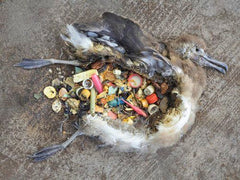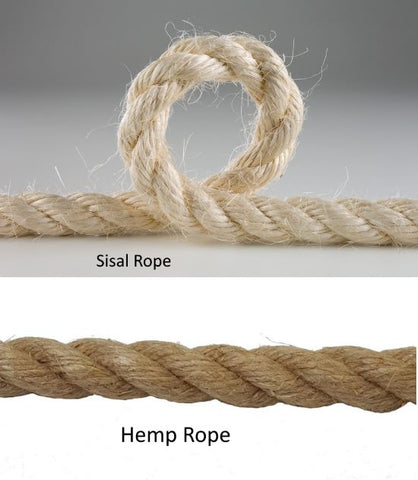You have no items in your shopping cart.
Plastic Pollution - electric fencing's contribution.
Plastic pollution is the accumulation of plastic objects (e.g.: plastic bottles and much more) in the Earth's environment that adversely affects wildlife, wildlife habitat, and humans.Plastics that act as pollutants are categorized into micro-, meso-, or macro debris, based on size. Plastics are inexpensive and durable, and as a result levels of plastic production by humans are high. However, the chemical structure of most plastics renders them resistant to many natural processes of degradation and as a result they are slow to degrade.Together, these two factors have led to a high prominence of plastic pollution in the environment.
 It’s been found in the highest mountains and deepest oceans. It is a major problem at the peak of Mount Everest (+8800 meters, 10 tonnes recently removed) and has been seen at the depths of the Mariana Trench (-11,000
It’s been found in the highest mountains and deepest oceans. It is a major problem at the peak of Mount Everest (+8800 meters, 10 tonnes recently removed) and has been seen at the depths of the Mariana Trench (-11,000  meters). Tiny plastic waste is even discovered in Britain's most iconic and remote rivers, lakes and reservoirs – including the seemingly crystal-clear waters of the Lake District. Plastic hangs around in the environment for hundreds of years. It doesn’t disappear, it just breaks down into smaller and smaller pieces that continue to pollute the planet. With more than eight million tonnes going into the oceans every year, it is estimated there will be more plastic than fish by 2050 and 99 per cent of all the seabirds on the planet will have consumed some regularly causing death. It is thought the sea now contains some 51 trillion microplastic particles – 500 times more than stars in our galaxy.
meters). Tiny plastic waste is even discovered in Britain's most iconic and remote rivers, lakes and reservoirs – including the seemingly crystal-clear waters of the Lake District. Plastic hangs around in the environment for hundreds of years. It doesn’t disappear, it just breaks down into smaller and smaller pieces that continue to pollute the planet. With more than eight million tonnes going into the oceans every year, it is estimated there will be more plastic than fish by 2050 and 99 per cent of all the seabirds on the planet will have consumed some regularly causing death. It is thought the sea now contains some 51 trillion microplastic particles – 500 times more than stars in our galaxy.
Electric fencing twines, ropes and tapes are constructed out of plastic filaments plaited together and inter-woven with very thin metal filaments which do the business of conducting electricity – the plastic is simply the carrier.
These plastic tapes were developed and very well marketed to replace wire with the perception that horses were incapable of seeing wire and were getting caught up in it with sometimes horrible consequences. (Horses Eyesight - Dispelling the Myths.) Made from either polypropylene or polyethylene these are now the main component of virtually every fence in Europe. Unfortunately, it is not the plastic that results in the tape or rope being discarded and changed – it is the thin metal filaments that break easily for a variety of reasons. They may be over-tensioned so that the plastic stretches, but the metal cannot and breaks or they may flap in the wind causing the metal to twist back and forth so breaking. As a result, the tapes may be discarded before the life of the plastic is complete.
(Horses Eyesight - Dispelling the Myths.) Made from either polypropylene or polyethylene these are now the main component of virtually every fence in Europe. Unfortunately, it is not the plastic that results in the tape or rope being discarded and changed – it is the thin metal filaments that break easily for a variety of reasons. They may be over-tensioned so that the plastic stretches, but the metal cannot and breaks or they may flap in the wind causing the metal to twist back and forth so breaking. As a result, the tapes may be discarded before the life of the plastic is complete.
Time to Move Away from Plastic?
Alternatives to plastic rope and twines are already available and have been around before plastics were ever invented. These ropes are made from a variety of natural materials such as hemp, jute, manila, cotton or sisal. The primary advantage is obviously that they are natural and when discarded will revert to the natural components of the compound. Manufacturing them with the small metal filaments should be feasible. They are generally of a lower breaking strain which is an advantage over the plastic product. These ropes are currently available in diameters already used in the electric fencing industry - 8, 6 and 3 millimeters. They are not currently available as ribbons or tapes woven in the manner currently available, would an existing tape machine be able to take these fibers and weave a tape? Tapes/ribbons that are currently available are woven very tightly and not really suitable.

The major disadvantage is the current cost of natural products over the synthetic variety. The source of the natural product is now very limited as a very small area is planted by farmers due to the drop in demand for natural fibers in rope making - think of how much was used in the old sailing vessels no longer required and many rope products are now plastic.
The natural products do absorb water making them heavier so more posts will be required but against that a wet rope is a good conductor of electricity so a fence should be more effective under those conditions. A concern is that they will not last, however most ropes or tapes are discarded well before the life of the plastic then it is reasonable to believe that this should not be a mitigating factor.
Plastic is very easy to handle and very cost effective.
Less Plastic on the Market?
One of the effects of the COVID 19 lockdowns has seen a substantial reduction in demand for petroleum products as cars and aeroplanes were not used. Plastic is a direct by-product of the distillation process of crude oil into its fractions. One of these fractions, naphtha, is the crucial compound for the production of plastics. Two main processes are used to produce plastics - polymerisation and polycondensation - and they both require specific catalysts. In a polymerisation reactor, monomers such as ethylene and propylene are linked together to form long polymer chains. Each polymer has its own properties, structure and size depending on the various types of basic monomers used.
With the increased use of electric motor propulsion the demand for oil production will be reduced resulting in less plastic being available. Should it become necessary to distill crude oil specifically for plastic then the cost is likely to increase and at the same time come under public pressure with respect to using hydrocarbons.
Whilst replacing the current use of plastic material is a really small contribution relative to the mountain of plastic packaging that is thrown away daily – every little bit will help and may be useful as a marketing tool.








← Older Post Newer Post →
0 comments